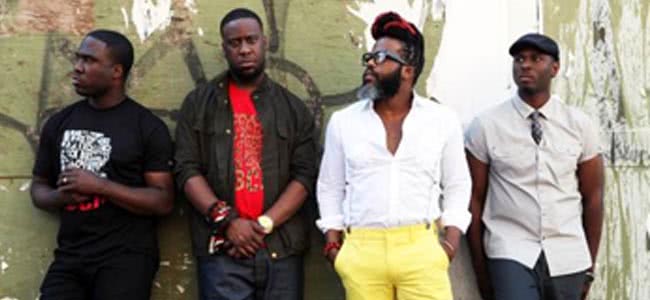While suffering from a venue change and support act cancellation would usually be cause for concern, Texas-born jazz pianist Robert Glasper remained as cool as ever as he stunned a packed crowd at 170 Russell on Friday.
Starting off proceedings were DJs Obliveus and Eddie Mac, who provided sets of funk, soul, and hip hop to warm the slowly growing crowd. Misinformation on the internet regarding set times meant anyone who was there early stood confused as murmurs of “I thought Glasper was on at 9?!” and “Who is this?” were overheard.
The show continued with DJ Total Eclipse tearing a new one through the venue’s speaker system. One sixth of legendary New York collective X-Ecutioners, he is widely known for his supreme turntable skills.
Eclipse took the crowd on a crash-course of classic funk and hip hop as he worked his way through remixes of The Commodores’ ‘Brick House’, De La Soul’s ‘Soul No Go’, and The Emotions’ ‘Best of My Love’ – all the while cutting, scratching, mixing, and beat-juggling like a true pioneer. The highlight of his set came from an extraordinary, near five-minute scratch solo over the classic Rob Base and DJ E-Z Rock track, ‘It Takes Two’.
Playing 30 minutes past his supposed end time, Eclipse never failed to impress the audience. Once vibraphone legend Roy Ayers hit the stage to perform with his backing singer and sax player alongside the DJ, the crowd started to get serious, filling the dance floor and loosening their hips to Ayers’ classic jazz-funk fusion.
The makeup of this group made for captivating observation. Here was a talented collective of 70s funk-fusion stalwarts playing their signature sound alongside one of today’s most gifted turntablists. However, the novelty soon wore off as it was apparent that the DJ’s skills were not truly being harnessed. Soon he was reduced to somewhat of a backing track while Ayers et al moved through their funky disco arrangements.
A glance at a very hard to locate running time poster revealed that jazz piano legend Lonnie Liston Smith had been omitted from the event. With still no information being available about the cancellation, it remains a mystery.
Love Music?
Get your daily dose of metal, rock, indie, pop, and everything else in between.
These obstacles were minor compared to the absolutely mind-bending set provided by the Robert Glasper Experiment.
Glasper is a force of modern musicianship. Combining his extensive knowledge of jazz improvisation and hip hop style, the artist has created an utterly unique fusion for the r ‘n b age. Dropping J Dilla references into Herbie Hancock-esque piano lines came as second nature, as he and his band filled the room with sounds that were equally as futuristic as they were salutations to early jazz improvisation.
The use of vocoder can often be seen as a gimmick, however vocalist and saxophonist Casey Benjamin showed virtuosity and artistic sensibility as his voice was transformed into robotic yet entirely melodic distortions. Derrick Hodge’s work on bass was something to be astounded by at every moment, while Mark Colenburg provided some of the most progressive, effortless drumming seen since the Stone Age.
Working their way through tracks from Black Radio 1 and 2, the Experiment showed no weakness. Glasper’s calm and collected presence – combined with the smaller venue – provided an overwhelming sense of intimacy.
The set was astonishingly good, building in intensity from song to song. Towards the climax, the crowd were treated to a guest appearance by the vocalist from Melbourne future-soul outfit Hiatus Kaiyote, Nai Palm. She was wholly at home on stage with Glasper and his band as she, and the rest of her group, are as world class as the Experiment themselves.
Setbacks aside, this show was a sublime opportunity to see the future of modern jazz and r ‘n b in the flesh and it did not disappoint.

































